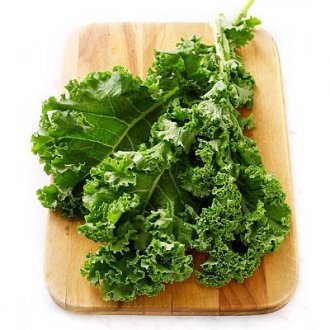Fruits and Veggies Matter More Month - Kale
- Category: Blog
- Posted On:
- Written By: PVHMC - Admin

 Why settle for iceberg lettuce that is lacking in nutrient density? You can get more “bang for your buck” with kale. First, you may ask, “what does nutrient dense mean?” Nutrient-dense foods are foods that have a higher amount of nutrients in comparison to the amount of calories they provide. There are many nutrient-dense foods out there, but none like kale. So, let’s take a look at what’s inside this amazing green leafy vegetable and do a little comparison to a well-known green, iceberg lettuce.
Why settle for iceberg lettuce that is lacking in nutrient density? You can get more “bang for your buck” with kale. First, you may ask, “what does nutrient dense mean?” Nutrient-dense foods are foods that have a higher amount of nutrients in comparison to the amount of calories they provide. There are many nutrient-dense foods out there, but none like kale. So, let’s take a look at what’s inside this amazing green leafy vegetable and do a little comparison to a well-known green, iceberg lettuce.
Kale | Serving size 1 cup (67g) | Calories 33 | % Daily Values based on 2,000 Calories |
Total fat | 0% | Vitamin C | 134% |
Cholesterol | 0% | Total carbohydrate | 2% |
Sodium | 1% | Protein | 2g |
Vitamin K | 684% | Calcium | 9% |
Vitamin A | 206% | Iron | 6% |
Iceberg lettuce | Serving Size 72g | Calories 10 | % Daily Value Based on 2,000 Calories |
Total fat | 0% | Vitamin C | 3% |
Cholesterol | 0% | Total carbohydrate | 1% |
Sodium | 0% | Protein | 1g |
Vitamin K | 30% | Calcium | 1% |
Vitamin A | 7% | Iron | 2% |
One can see very easily by the numbers that kale is a more nutrient-dense food than iceberg lettuce. Now that you have switched to the greener side, you may be asking, “How do I eat kale? In a salad?” You most definitely can, but kale is a much more versatile vegetable than you give it credit for.
Recipes:
Braised kale with cherry tomatoes
- Serves four
- Ingredients
- 2 tsp. extra-virgin olive oil
- 4 garlic cloves, thinly sliced
- 1 pound kale, tough stems removed and leaves coarsely chopped
- ½ cup vegetable stock or broth
- 1 cup cherry tomatoes, halved
- 1 tbsp. fresh lemon juice
- ¼ salt
- 1/8 tsp. freshly ground black pepper
- Directions:
- In a large frying pan, heat the olive oil over medium heat. Add the garlic and sauté until lightly golden, 1 to 2 minutes. Stir in the kale and vegetable stock. Cover, reduce the heat to medium-low and cook until the kale is wilted and some of the liquid has evaporated, about 5 minutes.
- Stir in the tomatoes and cook uncovered until the kale is tender, 5 to 7 minutes longer. Remove from the heat and stir in the lemon juice, salt and pepper. Serve immediately.
- Nutritional analysis per serving
Total fat | 3g | Dietary fiber | 3g |
Calories | 93 | Monounsaturated fat | 2g |
Protein | 4g | Saturated fat | 2g |
Cholesterol | 0mg | Sodium | 206mg |
Total carbohydrate | 15g |
Eat These Chips!
- Take 4 big handfuls of your kale
- Toss with 2 tbsp. of olive oil
- Dump contents on to a cookie sheet and spread it out as thin as possible
- Bake for 15 minutes and 375 degrees, turning them halfway through.
Other ideas and ways to prepare kale
- Smoothies
- Omelets, wraps
- Grilled
- Pasta sauce
- Baked
- Soups and stews
Here is some information on our consumption of vegetables from The Centers for Disease Control and Prevention:
Percentage of people who eat vegetables three or more times per day:
California | 2000 | 2002 | 2003 | 2005 | 2007 | 2009 |
23.3 | 23.5 | 24.6 | 26.5 | 25.6 | 26.8 |
Just by taking a look at the graph and the numbers, we can see that as a country we do not get our recommended daily intake of vegetables. For a female, it’s recommended that she eat 2-2.5 cups and a male 2-2.5 cups per day. Less than half of us are getting that daily recommendation. So, mix things up a little, try new recipes in the kitchen and put more kale in your life.
About Art Espidol, RD
Art Espidol served in the US Navy from 2003 to 2008 as a Hospital Corpsman. After finishing his military service he went back to college and earned his Bachelor’s degree in Nutrition and Food Science from California State University, San Bernardino. Art then went on to earn his Master’s in Nutrition and Dietetics from Loma Linda University. He is currently a Registered Dietitian at Pomona Valley Hospital Medical Center.



